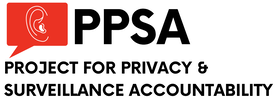|
Brian X. Chen, lead consumer technology writer for The New York Times, offers specific ways we can protect our images from exploitation in the digital cloud. He walks us through simple steps we can all take to store our images on our computers and delete them from the cloud. But why did The Times deem this advice worthy of its editorial page?
The privacy of our images is suddenly topical now that privacy advocates are alarmed by Apple’s announcement that it will scan iPhones for code linked to a database of child sexual abuse material (CSAM) when our photos are uploaded to the iCloud. Chen explains why this commendable concern for children could lead to other abuses: But some cybersecurity experts countered that the content-flagging system was invasive and infringed on people’s privacy. They warned that Apple was creating a precedent that made it simple for surveillance-heavy countries like China to pass laws that could require the company to use the technology for other purposes, such as scanning for political images that are unfavorable to an authoritarian government. Chen quotes Erica Portnoy of the Electronic Frontier Foundation that Apple “said they don’t have any plans to do worse things with this technology, but this just feels, at this point, naively optimistic.” Bottom line: Apple is building a backdoor. Who will walk through it and for what purpose? Comments are closed.
|
Categories
All
|


 RSS Feed
RSS Feed